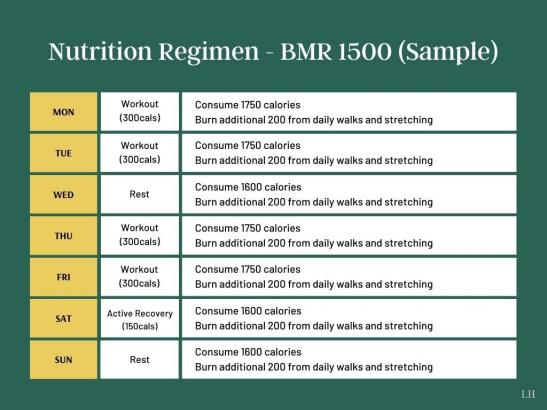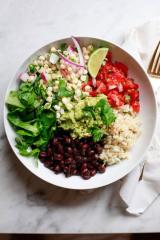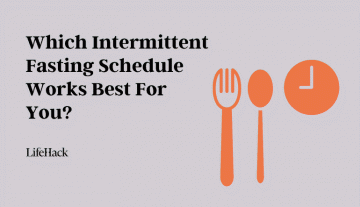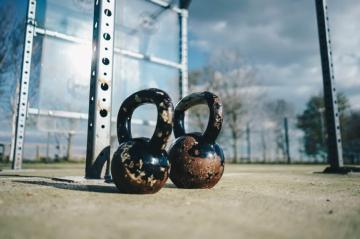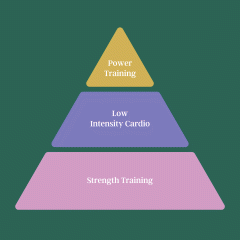One of the most common questions I hear from new clients is how to get a six pack, and “Why is it so hard to get abs?” The simple answer is most recommendations for 6 packs abs are misleading.
The truth is there is not a workout or exercise that will grow a 6 pack. It’s also not all nutrition either and it’s not a fast process.
Now that we’ve cleared that out, let’s go into what’s needed to get a six-pack.
How to Get a Six-Pack Fast?
Having visible abs is a combination between a strong core and low body fat percentage, and it won’t and shouldn’t happen quickly. How low your body fat needs to be is unique to you, which means you’ll need to pay attention to how your body feels as you lean out to keep yourself safe. Rushing this process can not only damage your metabolism, but can lead to joint and muscle weakness and cause injury.
So take your time, do frequent check-ins along the way and be patient. I have clients that see ab definition at 25% body fat and clients that don’t see definition until they’re under 10% (only safe for men). So before you start working toward this, keep in mind that many people discover that they’re very happy with their physique before they get there, and it’s not worth what they would need to do to carve those abs.
The first step to having visible abs is a strong core, which might seem obvious, but the exercises required probably aren’t what you expect.
For any muscle or muscle group to strengthen it, you must train it within its intended function. Your abs, which are just one of many muscles in your core, have a very specific job and function differently from other muscles in the body. Though your abs are responsible for allowing you to bend forward, that’s actually not their intended role.
⌄ Scroll down to continue reading article ⌄ ⌄ Scroll down to continue reading article ⌄
The core’s primary job is actually to support your spine and resist flexing forward or backward and rotating unnecessarily, while still having the range of motion to move through all of those directions without injury. What this means is that situps and crunches are not the most effective core exercises. Doing these exercises is essentially treating a movement that should be a stretch like a strength exercise. While you can build muscle by doing this, it’s certainly not efficient and your risk of injury is very high along the way.
Best Exercises to Get a Six-Pack
So what should you do? Train core stability!
Training this skill can be direct or indirect, below are some of the best exercises to directly train your core bracing. And as a bonus, this style of training is much less likely to result in widening your midsection:Pallof
Press
Hollow Body Hold
Deadbugs
One or more of these should appear in every workout throughout your routine. Indirect core bracing comes from large compound movements like squats and deadlifts. Both types of training should appear in your routine.
Squat
Deadlift
What to Eat to Gain Abs?
There’s not a magic diet or food that will lean you out to make your abs visible. Ultimately, it leaning out is the result of a caloric deficit; and ab definition is the product of a balanced diet.
The best path is to first find your unique Basal Metabolic Rate (BMR), you can do this by going to a local gym or healthy club that has an InBody for a scan. While this won’t be perfectly accurate, the margin or error is small enough that you can base safely your nutrition on the information you receive.
Alternatively, you can try this online BMR calculator. It takes activity level into account, however there is still a bigger variance (up to 10%) with this method.
⌄ Scroll down to continue reading article ⌄ ⌄ Scroll down to continue reading article ⌄
Once you have your BMR, aim to consume no less than 100 calories over that number. This ensures that you are not at risk of poor recovery, metabolic damage or injury. The rest of your deficit is created with activity.
For example if you’re aiming for a 250 calories daily deficit and your BMR is 1500, your minimum calorie intake would be 1600 calories, and you would want to burn an additional 250 calories through daily movement.
For someone looking for relatively fast, but safe results, I would recommend no more than a 500 calorie deficit per day. This results in roughly 1lb of fat loss per week and is still slow enough to ensure you’re building muscle.
Below is a sample nutrition regimen to follow for someone with a BMR of 1500:
This structure is realistic for most people, resulting in an average daily deficit of 365 calories and roughly 72lbs of fat loss per week.
As a note, this is effective for apparently healthy adults that do not have underlying medical conditions and are not on medication that cause weight gain, hormonal disruption.
Also, for those on beta blockers, if you use an activity tracker to track calories burned, keep in mind that because most trackers calculate calorie burn based on your heart rate, the calorie burn displayed on your tracker will most likely be inaccurate and read too low.
⌄ Scroll down to continue reading article ⌄ ⌄ Scroll down to continue reading article ⌄
Protein
You may remember from high school biology that “protein is the building block of life”, this also means it’s the building block of muscle. In order to build muscle effectively we need to go through a process called Muscle Protein Synthesis.
Simply put dietary protein contains up to 9 essential amino acids. These same components are the amino acids our body needs to create new tissue, specifically muscle tissue. After a strength training session, our body begins searching for these amino acids in response to the exertion to add new muscle tissue.
So if you want abs, you need adequate protein. How much is enough protein? This is dependent on your body and your goals. Though RDA recommends 8g per kg of bodyweight, these recommendations are developed for dietary safety, meaning that are intended as the minimum to prevent malnutrition.
Active adults looking to gain muscle will need significantly more. Nutrition experts consider 2.2g/kg and 2.4g/kg for those on a plant-based diet, or roughly 30% or your calorie intake to be the maximum necessary protein consumption.
If you look at your protein intake now and you’re far from that number, aim for a middle ground to start (1.6g/kg). This will allow your body to adapt and prevent any potential digestive upset. From there, you can slowly increase as necessary depending both on how you feel and your results.
Micro-Nutrient Density
It’s also important to prioritize nutrient density to reach your goal safely and as quickly as is realistic.
When focusing on calorie deficits, it’s easy to just look at the numbers and ignore our micro-nutrients. However, ensuring your diet is nutrient rich allows your body to function optimally and more comfortably in a deficit.
⌄ Scroll down to continue reading article ⌄ ⌄ Scroll down to continue reading article ⌄
Of course, keeping up with a calorie deficit and tracking every little micronutrient isn’t realistic for most people. To simplify the process, eat the rainbow. The color of the fruits and veggies we consume comes from the nutrients contained within them. For example, Carotene is yellow or orange depending on the density.
When preparing a plate for yourself, try to include as many colors as possible in every plate. One small serving or even a half serving of each color’s fruit or vegetable will ensure a balanced diet.
How Long Does it Take to Get a Six-Pack?
The short answer is it depends. Like we’ve discussed, there are 2 factors: building a strong core and fat loss. While within reason (again outside of medical conditions) fat loss can more easily be mapped out, the rate at which you build muscle is dependent on the follow factors:
Training quality and frequencyRecovery qualitySleep qualityStressNutrition qualityGenetics
That is quite a few variables and does not consider unplanned hiatus, illness or injury.
That being said, the absolute fastest rate of safe fat loss is 2lbs per week, which is considered an aggressive path. To be clear, that is fat loss, not weight loss, you’ll be building muscle so don’t expect the weight on the scale to reflect 2 lbs lost per week.
In contrast, the average active person will build 1-2 lbs of muscle per month. Those that are new to strength training may see up to 4lbs in a month but that rate of progress is brief.
⌄ Scroll down to continue reading article ⌄ ⌄ Scroll down to continue reading article ⌄
Considering those factors to keep yourself safe and avoid rushing the process, set an expectation for a minimum of 6 months if you’re already active and relatively lean.
Final Thoughts
If you’re starting your path toward getting a six pack, focus on healthy core work, balanced nutrition, and be patient.
Keep in mind I’ve worked with clients that worked for nearly 2 years to see ab definition, but because they took their time once they reached that goal, it was more sustainable.
And of course there are those that get there and realize it’s not as important to them as they thought and they’re happy just feeling great and being fit even without the abs. It’s always okay to change your goals if they no longer suit you.

